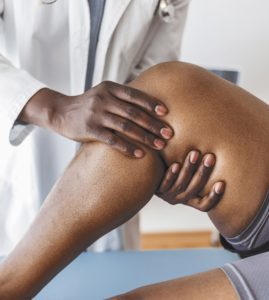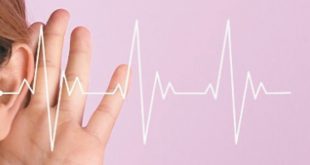By Dr. Reginald Pinder II | Sports Medicine | Millennium Physician Group


Sports medicine physicians are uniquely equipped to handle the diagnosis and non-operative treatment of musculoskeletal system disorders. These disorders include painful muscles, tendons, bones, joints, ligaments, and nerves. In addition, they are trained in the treatment of medical problems adversely affecting athletic performance. This includes concussion management, exercise prescriptions, and return to play consultation after illness for example.
Under the care of sports medicine, not only is the condition at hand treated utilizing various non-operative means, but also by incorporating prevention into the rehabilitation process to decrease the chance of future injury. My specialty helps people of all ages and activity levels. From pediatric through geriatric, sedentary to professional athlete, sports medicine aims to alleviate pain, improve functional status, and promote health and well-being.
What is OMT?
Osteopathic manipulative treatment is a conglomerate of manual treatment techniques which aim to restore balance between the various body systems by enacting change through the musculoskeletal system. Osteopathic physicians undergo extensive training regarding these various treatment modalities and how each can be employed in certain situations. During an OMT visit, your physician will diagnose your area of concern, as well as other areas of the body which may have also been affected. The diagnosed abnormal findings are called “somatic dysfunctions” and are evidenced by tissue texture change, asymmetry, altered range of motion, and/or tenderness. Depending upon how your pain began, how long it has been present, and your other medical conditions, your physician will determine how to best restore balance between these dysfunctions.
Ultrasound Guided Procedures
Primary care sports medicine physicians complete additional training beyond residency termed fellowship. During fellowship they are trained in the use of ultrasound for both diagnostic evaluation of injured structures, as well as for interventional injections. Two commonly injected substances are corticosteroids and viscosupplementation.
Corticosteroid Injections
Corticosteroid injections help to alleviate pain in the specific area injected. Pain relief is achieved by the corticosteroids’ powerful ability to decrease inflammation and swelling.
Viscosupplementation Injections
Viscosupplementation is an injectable substance used in arthritis that mimics the natural synovial fluid found in the joint. Synovial fluid has a high concentration of hyaluronic acid (HA) and is used to help lubricant the joint, regrow cartilage, and provide cushioning.
Regenerative Medicine
Regenerative medicine includes injections which accelerate the body’s natural ability to heal damaged tissue, thereby regaining function. The two primary forms of regenerative medicine are prolotherapy (prolo) and platelet-rich plasma (PRP) injections. By using ultrasound guidance, I am able to precisely place the injection into the damaged structure to ensure accurate delivery.
Prolotherapy
Prolotherapy is a series of injections that purposely irritates the injured area. It may sound counterintuitive; however, prolotherapy helps the body lay down new connective tissue in response to the irritation which then decreases pain. It works by injecting a mixture of lidocaine (a numbing agent) and dextrose (sterile sugar water). The duration and quantity of injections depends upon the particular area being treated, but typically anywhere from 2 to 6 injections are required.
Platelet-Rich Plasma
Platelet-rich plasma is created using the patient’s own blood. A small amount of blood is drawn and placed into a centrifuge, which separates the various components found in everyone’s blood. At the end of the spinning process, the “liquid gold” layer known as platelet-rich plasma is harvested. Unlike prolo, PRP is able to regenerate more specific types of tissue where it is injected. When treating a muscle tear, PRP injected into the tear will create more muscle fibers, restoring strength. If injected into a joint space, it will lead to cartilage growth and increased synovial fluid, the body’s natural joint cushion. As with the previously mentioned injections, PRP is also delivered under ultrasound guidance. Not only does it lead to a more accurate delivery, but also allows me to inject surrounding structures which also may be damaged. This leads to a stronger functional unit and increases efficacy. After your PRP injection, you will then enter a brief rehabilitation protocol to ensure maximal benefit from the procedure. PRP provides an alternative to surgery by promoting safe and natural healing in an accelerated format.
Physical Therapy
I work directly with physical therapists to create individualized plans based on my patient’s specific needs. If patients have limited functional mobility or other musculoskeletal impairments, physical therapy can help minimize pain, retrain muscles, and get them back to the best state of recovery as possible.
When a patient visits me, my goal is to get to the root cause of their injury with diagnostic imaging and an in-depth physical examination, which allows me to decide on their specific treatment plan. For example, if a patient has back pain and we discover it’s the sciatic nerve, instead of jumping into a surgical intervention, we use conservative treatment options to alleviate their pain and restore function to the area. This saves the patient time expenses, alleviates long recovery, and gives them the ability to recover and heal naturally.
Summary
With each patient, my goal is to address the root cause of the injury or pain. This will be done with a thorough physical exam, and complemented by advanced imaging when necessary. Together, we will create a cost-effective treatment plan based on your needs and level of activity. Instead of jumping into a surgical intervention, I will use conservative treatment options to alleviate pain and restore function.
Reginald Pinder II, D.O.
Sports Medicine
• EDUCATION: Doctor of Osteopathic Medicine, Edward Via College of Osteopathic Medicine, Blacksburg, Virginia
• RESIDENCY: Family medicine, Riverside Family Medicine Residency, Newport News, Virginia
• FELLOWSHIP: Sports medicine, Virginia Tech, Blacksburg, Virginia
• SPECIALTY: Sports medicine
• FOCUS: Non-operative orthopedics, sports-related concussions, ultrasound-guided injections
• HOBBIES: Sports, photography, fishing, and travel
Millennium Physician
13813 Metro Parkway, Suite H, Fort Myers, FL 33912
(239) 938-1788
www.MillenniumPhysician.com
 Southwest Florida's Health and Wellness Magazine Health and Wellness Articles
Southwest Florida's Health and Wellness Magazine Health and Wellness Articles

